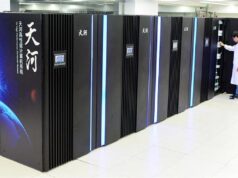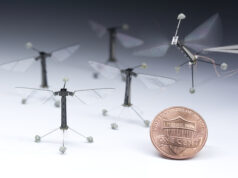The Rocket That Dreamed of Space
In the cold, unfeeling void above Norway, Isar Aerospace’s Spectrum rocket clawed its way skyward. For a moment, it was a dream realized—until, suddenly, it wasn’t. The nine engines, which had burned with the desperate hunger of machines longing to escape gravity’s prison, faltered. The vehicle twisted in the sky, like a marionette with its strings cut, and then fell, its fate sealed before it ever had a chance to glimpse the cosmos.
The Flickering Spark of Progress
The engineers had always known this was a possibility. Space is a cruel mistress, one who has watched countless machines perish in their first attempts to court her. In 2006, SpaceX’s Falcon 1 met a similar fate—a whisper from the past reminding us that success is often born from the wreckage of failure.
Daniel Metzler, Isar’s co-founder and CEO, saw it not as a disaster, but as enlightenment. “Today, we know twice as much about our launch system as yesterday,” he wrote, his words tinged with the optimism of a man staring at the wreckage of his machine and seeing only a blueprint for its successor.
The Fire in the Sky
From Andøya Spaceport, the launch had begun with the promise of history in the making. The nine engines burned liquid propane and liquid oxygen, generating 150,000 pounds of thrust. For 15 seconds, Spectrum climbed, its exhaust shimmering against the snow-dusted cliffs below.
Then came the tremors—small, imperceptible shifts in trajectory, the wobbling of an entity unsure of its place in the heavens. Control slipped away, and the rocket tumbled, its engines shutting down in an act of mechanical surrender. The sea below swallowed it whole, its impact marking the end of the dream’s first attempt.
Failure, or the Beginning of a New Paradigm?
To those who understand the language of rockets, this was not failure. This was learning.
Isar Aerospace has been a beacon of Europe’s ambition to reclaim its place among the stars. With over 400 million euros in funding and the backing of the European Space Agency, Germany, and NATO, the company stands as one of the continent’s best hopes for independent access to orbit. The European Launcher Challenge underscores this urgency, with ESA seeking commercial partners to rival the behemoth that is SpaceX.
Metzler’s measure of success was simple: Don’t obliterate the launch site. By that metric, the test was a triumph. The pad remained intact, the data was plentiful, and the engineers were already sculpting their second and third Spectrum rockets at their Munich facility.
The Echoes of Industry Giants
In a world where Europe has long relied on Russia’s Soyuz rockets or America’s Falcon 9s, the desire for sovereignty in space is more pressing than ever. The failures of the Vega rocket and the delays of Ariane 6 have left a vacuum—one Isar Aerospace aims to fill.
And they are not alone. Rivals like Rocket Factory Augsburg and Orbex are hot on their heels, each vying to become the next commercial launch titan. Isar’s strategy mirrors that of SpaceX: iterative development, rapid testing, and the willingness to embrace failure as a stepping stone. Elon Musk’s Starship exploded spectacularly on its first flight—yet no one would dare call it a failure.
The Future is Written in the Stars
Europe is at an inflection point. As war reshapes alliances and disrupts old partnerships, space has become more than an aspiration—it is a necessity. Isar Aerospace’s Spectrum rocket was not simply a machine of metal and fire. It was a symbol of Europe’s desire to free itself from the gravitational pull of past dependencies.
Metzler and his team will rebuild. They will analyze. They will launch again. And one day, Spectrum—or its descendant—will escape Earth’s grasp, proving that even in failure, there is momentum.
Until then, the sea holds the wreckage, and the sky waits for the next attempt.












